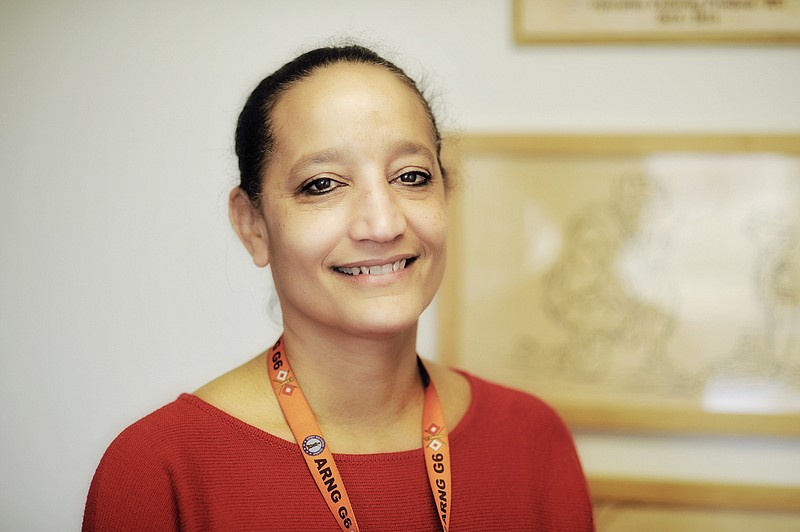Des Moines, Iowa, was a nice place to grow, but Lt. Col. Ingrid Hawkins, of the Missouri National Guard, hoped to see a few other places when she became an adult.
After graduating from high school in 1984, she also wanted to work, and took a few jobs - and was employed by an insurance company and several other businesses. College wasn't always on the horizon.
But she was interested in military service and wished to see other parts of the world. At 22, she entered the U.S. Army and left Des Moines.
"I asked to go to Germany," Hawkins said. "My mother was Dutch and there weren't any Army bases in Holland, but Germany was close."
She arrived just as history began to unfold in Berlin. The Berlin Wall was cracking.
In 1961, East Germany - a communist country under heavy influence from the Soviet Union - began construction of the wall, dividing the city, ostensibly to prevent "Western Fascists" from entering the country, but the structure was actually intended to end mass departures from the East.
Following a series of revolutions in the Soviet Union, government officials announced in 1989 that East Germans could begin traveling between the divided halves of the city, but the wall's actual demolition began in mid-1990.
"I was there when the wall came down," Hawkins said.
Driving their Trabant or Trabi cars, East Germans poured into West Berlin.
"They had these little cars that were so neat," she said. "These little cars ran on gas and oil together. They would drive these cars until they ran out of that fuel and leave them on the side of the road."
All the cars were the same, except maybe for some variations in color, Hawkins said. Hawkins' landlady at the time told her the few lucky folks to have the cars had worked for years to receive them.
West Germans gathered up the vehicles, smashed them up and put them in junkyards, Hawkins said.
Hawkins had her first son while she was in the Army and was pregnant with her second when she decided to step away from military service.
Her husband at the time was later stationed in then-Fort Myer, Virginia, alongside Arlington National Cemetery.
While they were there, the couple's young children were able to take in all the Washington, D.C., sites.
Later, her husband was stationed in Mexico, Missouri, which afforded Hawkins the chance to earn a bachelor's degree in legal studies with a minor in computers at William Woods University.
She'd been thinking about re-engaging with military somehow.
And while volunteering for the NAACP during a Juneteenth celebration - commemorating the abolition of slavery in the United States - she wandered into a recruiter's tent to talk about possibly joining the National Guard.
"I had been thinking about it," Hawkins said. "I kind of missed the structure of the military."
And she wanted to be an officer. So she joined the Missouri National Guard with the option of attending Officer Candidate School.
Now, she's deputy director of the information technology section of the Missouri National Guard.
The difference between the Guard and reserves, Hawkins said, is that the Guard has a dual mission in that it serves not only the president, but the governor.
"We have a lot of floods and tornadoes - we help with responses to that," Hawkins said. "We responded to Ferguson."
The organization also has helped other states during responses to disasters.
"I've worked I don't know how many hurricanes," she said. "I did Gustav (2008), Ivan (2004) and Jeanne (2004).
"We bring satellite communications when nothing is working."
The Missouri National Guard, which currently has 9,300 personnel, supports civilians throughout the country during declarations of states of emergency, she said.

